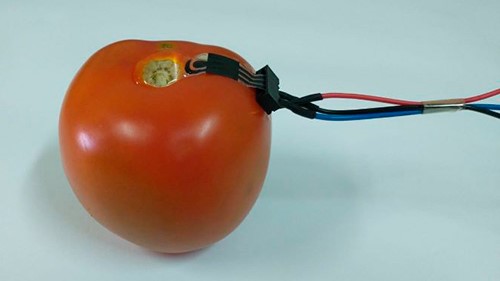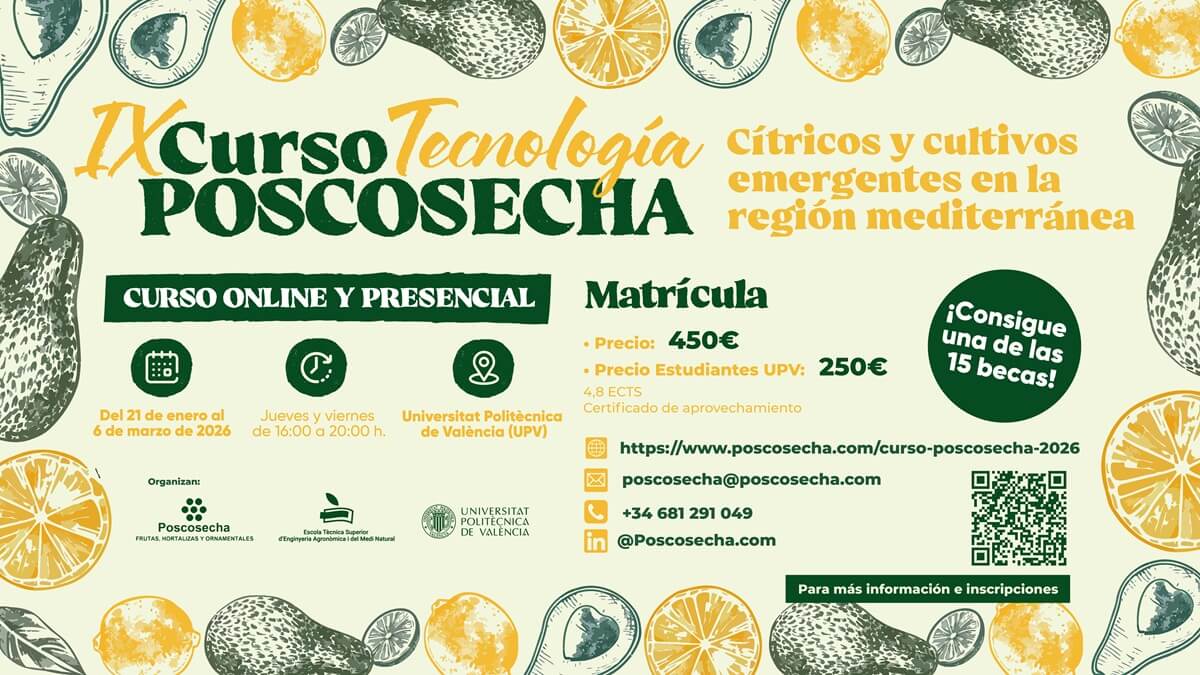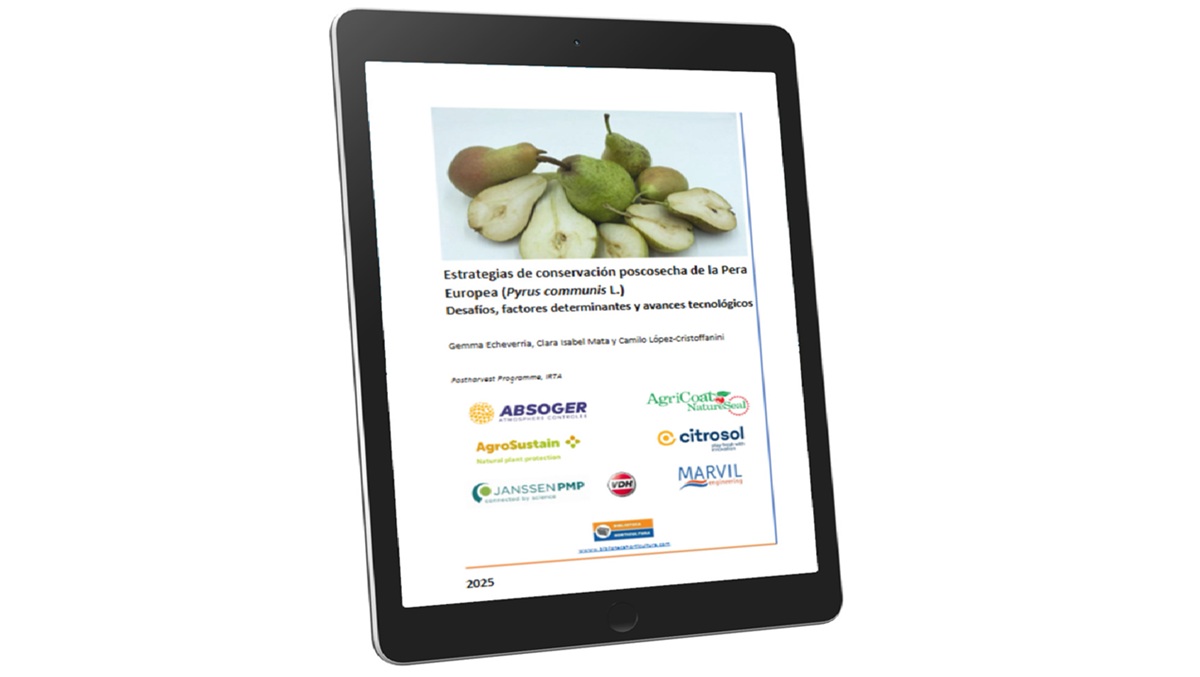News
Biodegradable Sensor for Monitoring Residues in Minutes
The biodegradable sensor, developed by a team of Brazilian researchers and made from environmentally friendly plant material, allows for the detection of residue levels in just minutes and ensures food safety

Researchers from the University of São Paulo (USP) and the Federal University of Viçosa (UFV) in Brazil have developed a sustainable and portable sensor capable of monitoring residue levels directly on vegetables.
This device, manufactured with cellulose acetate, a material made from wood pulp, has the potential to help ensure food safety in a world increasingly plagued by food scarcity, environmental issues, and health problems caused by the use of pesticides. The results of this study were published in the journal Biomaterials Advances.
Residue Monitoring
Pesticides are widely applied to increase agricultural productivity. However, only 50% of agrochemical products applied via fumigation reach the intended target. To prevent misdirected hazardous substances from contaminating humans through skin contact, inhalation, ingestion via food, and water, it is necessary to monitor their concentrations in soils, groundwater, wastewater effluents, surface water, raw drinking water sources, and food products.
The analytical tools most commonly used in these studies are chromatographic techniques, which, while effective, have some disadvantages, such as the need for sample treatment, the use of expensive instruments, the indispensable intervention of qualified laboratory personnel, and a long examination time, as well as lack of portability. Another fundamental problem to consider in today's world is the unsafe residues produced by organic solvents.
Advantages of Electrochemical Sensors
Paulo Augusto Raymundo Pereira, a researcher at the São Carlos Institute of Physics (IFSC-USP) and coordinator of the study, comments:
"As an alternative, electrochemical sensors can combine savings, rapid detection, miniaturization, large-scale production, convenience, practicality, high selectivity, and on-site pesticide detection, enabling analysis directly on the skins and leaves of food with sensors placed on plants; and that's what we did."
Cellulose Acetate, an Environmentally Friendly Material
"But instead of traditional environmentally unsustainable materials, which take a long time to degrade, such as ceramic materials or petroleum-derived plastic polymers, we used cellulose acetate, a plant-based material with low environmental impact that completely degrades in 340 days, depending on local conditions. Besides meeting the appropriate characteristics for sensor development, of course, which includes its low cost, portability, and flexibility."
The cellulose acetate sheets were manufactured using the casting method: the material is placed in a space with the appropriate format, and the complete three-electrode monitoring system was fabricated via screen printing.
During laboratory tests, lettuce leaves and tomato skins were sprayed with a solution containing carbendazim and Paraquat—the latter banned in the European Union in 2003 due to its harmful effects on humans but still used in Brazil—to simulate the use of pesticides in the real world. Then the portable sensor was placed directly on the surfaces of the food, and measurements were taken.
The results showed detection performance comparable to that of a polyethylene terephthalate sensor, the most commonly used raw material.
Effect of Washing on Residue Levels
In the study funded by FAPESP (projects 20/09587-8, 23/07686-7, 16/01919-6, 22/02164-0, and 23/09685-8), the efficiency of washing and immersing vegetables in one liter of water for two hours to remove residues was also investigated. Approximately 40% of carbendazim and 60% of Paraquat were removed from lettuce leaves, while 64% of both pesticides were removed from tomato surfaces. However, it was not possible to completely remove residues from the tomato skins. Raymundo Pereira comments:
"All these results indicate that the washing and immersion stages were not sufficient to remove pesticide residues. At least 10% of the substances remained on the food skins."
According to the researcher, this technology could be useful for international health control agencies, organic producers to achieve pesticide-free certification, and especially for rural producers to monitor residue levels in the field by applying the necessary doses in each crop location. Thus, it would be possible to decrease the use of these substances and increase productivity, with a reduction in the final consumer price.
The Researchers
In addition to the IFSC-USP team, researchers Samiris C. Teixeira, Nilda de F. F. Soares, and Taíla V. de Oliveira from UFV, and Nathalia O. Gomes, Marcelo L. Calegaro, and Sergio A. S. Machado from the São Carlos Institute of Chemistry (IQSC-USP) participated in this work.
The article entitled "Sustainable plant-wearable sensors for on-site, rapid decentralized detection of pesticides toward precision agriculture and food safety" can be read at the following link: www.sciencedirect.com/science/article/pii/S2772950823003990.
Source
Julia Moióli, FAPESP Agency, Brazil, https://agencia.fapesp.br/un-sensor-biodegradable-monitorea-los-niveles-de-pesticidas-aplicados-sobre-frutas-verduras-y-hortalizas/50745
Photo
Paulo Augusto Raymundo Pereira
Related news



.jpg)








